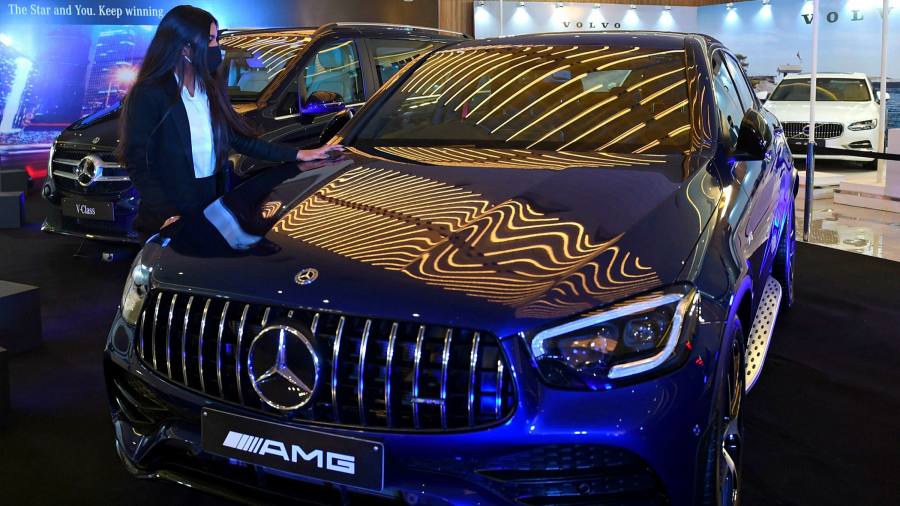[ad_1]
Daimler will create the world’s largest standalone commercial vehicle manufacturer as it splits its truck and Mercedes-Benz car businesses into two public companies.
It will list its trucks arm separately, paving the way for one of the largest German flotations this year and allowing both companies to focus on different emissions-free technologies.
Daimler shares rose 9 per cent to €64.48 in after-hours trade as investors backed the expected move, which analysts said could value the truck business at up to €35bn. Its parent company is valued at about €64bn.
Shareholders in Daimler will receive a “significant majority stake†in the new unit, the Stuttgart-based company said on Wednesday.
It aims to complete the public offering of the division on the Frankfurt stock exchange by the end of the year.
The remaining car business will be renamed Mercedes-Benz “at the appropriate timeâ€, Daimler added.
“This is a historic moment,†said chief executive Ola Källenius. “It represents the start of a profound reshaping of the company.
“Both companies operate in industries that are facing major technological and structural changes. Given this context, we believe they will be able to operate most effectively as independent entities.â€
The chair of Daimler’s powerful works council, Michael Brecht, endorsed the plan, saying management had pledged “additional support†to secure jobs.
Daimler’s employment guarantee for some German workers would continue to apply until the end of the decade, he added.
The flotation of Daimler’s truck unit has long been trailed and follows Volkswagen’s decision to spin off its lorry business, Traton, in 2019.
VW has also acquired US truckmaker Navistar in an attempt to gain a foothold in the lucrative American commercial vehicle market.
Daimler first restructured into a holding company containing a car division, a truck unit and a financial services arm in 2019.
But management have consistently pointed out there are few synergies between the two manufacturing businesses, especially when it comes to the phasing-out of combustion engines.
While Mercedes-Benz has ploughed several billion euros into battery-electric technology, Daimler Trucks has taken a much broader approach.
Last year it signed a joint venture with arch-rival Volvo to develop hydrogen-powered vehicles.
The two Daimler companies’ largest markets are also diverging. The largest chunk of Daimler Trucks’ revenues come from the US followed by Europe, whereas China is by far Mercedes’ largest and most profitable market.
While Daimler did not outline how much of its truck business it intended to float, analyst Arndt Ellinghorst of Bernstein estimated a quarter of the business would be up for sale, raising somewhere between €7bn and €8bn.
Daimler also said its Mobility division, which contains its financial services and leasing arms as well as car-sharing and ride-hailing businesses, would be roughly split between the two new companies.
“This marks the end of German carmakers’ obsession with these services,†said Ferdinand Dudenhöffer, director of Center Automotive Research in Duisburg. “Reality has overtaken mobility,†he added.
Along with other German carmakers, Daimler has benefited from a strong rebound in the Chinese economy at the end of last year.
Preliminary figures released last week showed earnings before interest and taxes stood at more than €6.6bn, beating analysts’ estimates of about €5.2bn for the year.
[ad_2]
Source link





